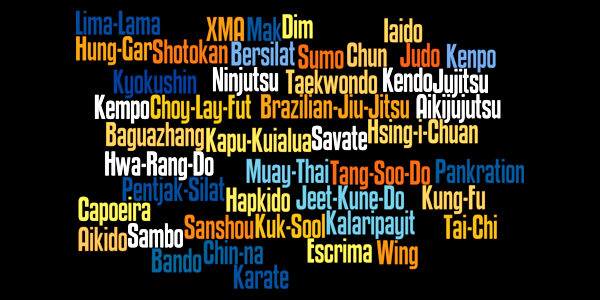What Makes Martial Arts Styles Different From One Another
I don’t know of anybody who just woke up one day and said, “I want to take shorin-ryu karate,” or “I want to take goju-ryu. “Most people don’t have any idea what makes martial arts styles different from one another. They just think karate is karate; it doesn’t matter whether it is really taekwondo, jujutsu or judo. They learn about those different systems only when they join a school and start reading books and magazines.
That is unfortunate because many people end up studying an art that is not particularly well-suited to their body type and personal goals. Although they often find out whether they are gifted in the art they’ve selected or they should have picked a different style during their first three months of training, you can save yourself some wasted time by reviewing the following guidelines for selecting a martial art.
- Because judo concentrates on throwing techniques, it is a good choice if you have a short, squatty physique. You won’t be punching or kicking, so you’ll have to rely on maneuvering close to your opponent, getting under his center of gravity and tossing him into the air and onto the mat. Judo is also a good choice if you are tall and lanky and don’t want to wrestle or get down on the ground because you’ve got too many limbs in the way. However, even if you are highly skilled, you will have trouble keeping a shorter opponent away from you.
- If you are small, you may want to study jujutsu, but you must not have an aversion to going to the ground, rolling around on your back and getting covered with sweat-both yours and your opponent’s. While you struggle to get your opponent into position for an armbar or choke, you will probably have to crawl between his legs and under his arms and contort your body in all sorts of directions. Having sustained a back or neck injury could preclude you from doing that.
- Taekwondo is best-suited for you if you’re tall, slender and flexible. Those qualities will enable you to execute fast high kicks all day long. However, if you’re heavily muscled or significantly overweight, you may find that your legs get awfully heavy after a while and that your kicks become slower and slower. You may also have to contend with poor endurance and flexibility.
- If you have a strong, stocky build, consider practicing shotokan or shorin-ryu karate. Those arts will allow you to showcase your strong hand technique and stances, and you can become very successful in competition and self-defense once you master them.
- Wrestling is a good choice if you are compactly built, strong for your size and have a good sense of balance and movement.
If you do not have one of the physiques described above, you should try a variety of arts to find out which one you like best. Also think about which aspect of the martial arts appeals to you the most. I enjoy kicking, but you might prefer punching because you have a different outlook on fighting. Of course, it is essential to possess skill in kicking, punching and grappling, and once you find an art that suits your needs, you should work on filling in the gaps that exist in your arsenal. You need not be an expert in all ranges of fighting, but you should at least be proficient in them.
By Bill Wallace Reprinted from Black Belt Magazine April 2002
About the Author
Bill Wallace is a former kickboxing champion and Black Belt Hall of Fame Member who now teaches seminars around the world. To contact him visit his website.



